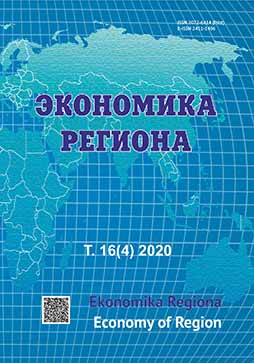Attractiveness of Cities during Social Isolation: Views of Residents of the Silesian Voivodeship (Poland)
Attractiveness of Cities during Social Isolation: Views of Residents of the Silesian Voivodeship (Poland)
Author(s): Jacek Szołtysek, Rafał OtrębaSubject(s): Economy, Health and medicine and law, Rural and urban sociology
Published by: Институт экономики Уральского отделения Российской академии наук
Keywords: city; quality of life; pandemic period; attractiveness of the city; limited mobility; mobility paradigm; mobility metaphors; cliche of the city’s attractiveness; antecedence of city ratings;
Summary/Abstract: The SARS-CoV-2 pandemic has led to the widespread introduction of the principles of social isolation and drastically reduced the right of residents to use the city, limiting mobility and meetings. The article examines whether the temporarily limited mobility due to the SARS-CoV-2 pandemic, reducing the quality of life in the city, also reduces its attractiveness. The city, assessed from the viewpoint of its attractiveness, aims to strengthen its appeal. We assume that the attractiveness of the city and assessment of the quality of life in the city are based on similar features. We sought answers to the following research questions. (1) Is it really possible to notice a decrease in the city’s attractiveness due to the pandemic? (2) Does a respondent’s opinion (belief) about the city as a living environment influence the assessment of the city in which the respondent lives? (3) Do factors describing the mobility of city inhabitants influence the quality of life? We revealed that the demographic characteristics of residents are to varying degrees related to the assessment of the attractiveness of the city. Gender of respondents has no significant influence on the assessment of the city and current place of residence, while age and educational level of education are important for this assessment.The older is the respondent, the lower is their assessment of the city. Simultaneously, the higher is the educational level, the higher is the propensity to assess the attractiveness of the city. The analysis of mobility revealed that not all examined mobility elements will equally improve the quality of life (measured by the assessment of the place of residence). Out of the 7 factors identified in the study, only 3 turned out to be statistically significant. Therefore, it can be concluded that these factors improve the quality of life of city residents.
Journal: Экономика региона
- Issue Year: 16/2020
- Issue No: 4
- Page Range: 1272-1284
- Page Count: 13
- Language: English

